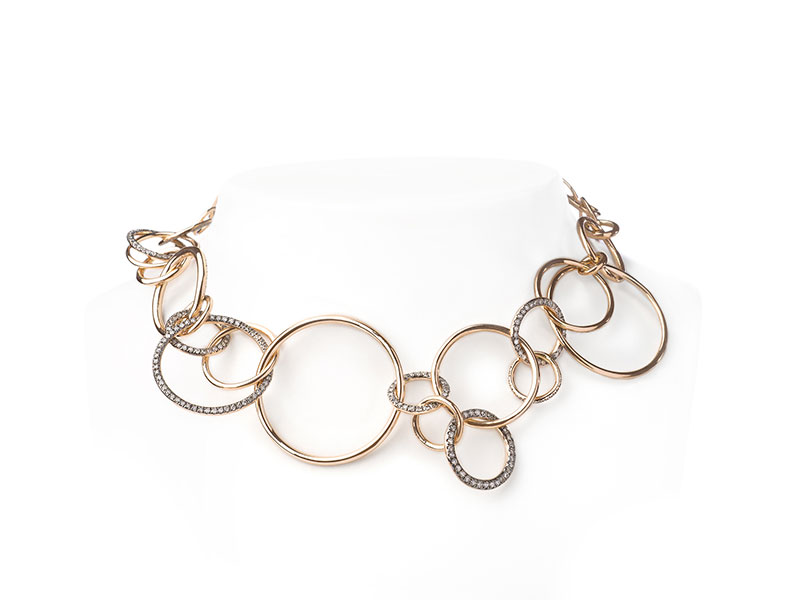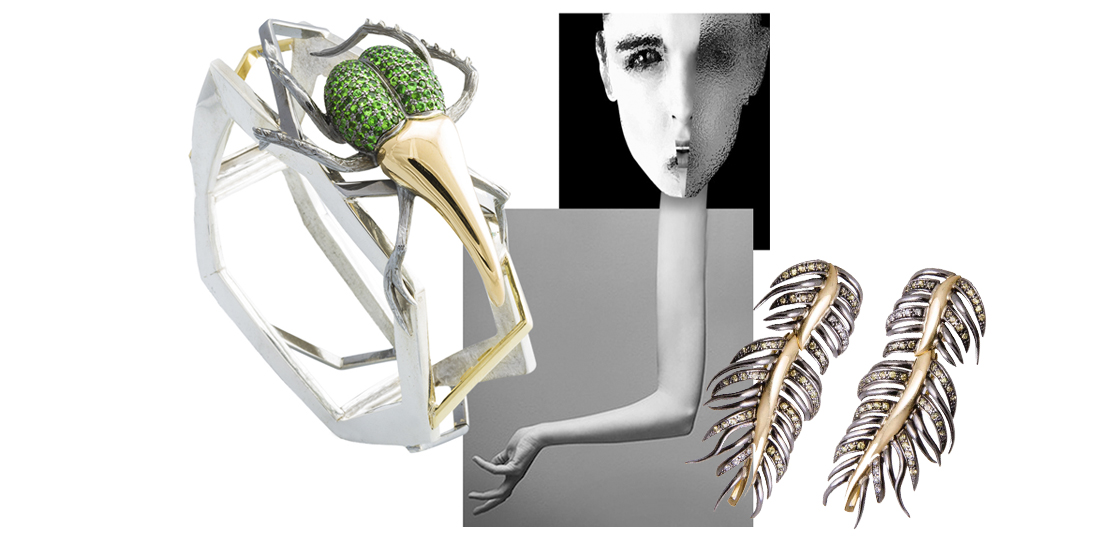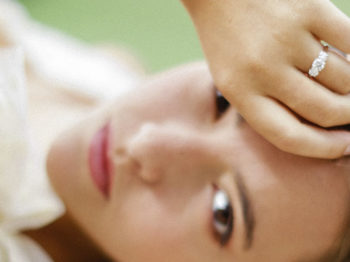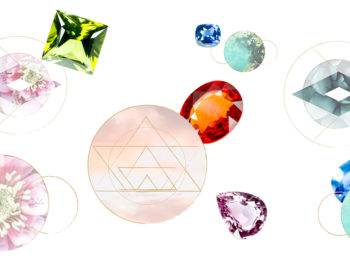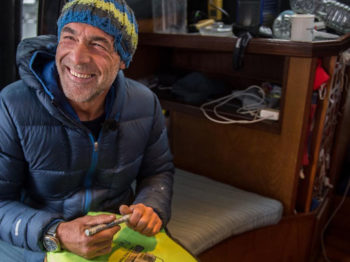The Lebanese designer stands out from the crowd with her eye-catching jewelry line. Each of her creations tells a story. A mix of her inspirations, thoughts and considerations on the role of jewels that makes every piece so unique. The Eye of Jewelry sat down with Gaelle Khouri to talk about what jewelry means to her and where does she draw her inspiration.
You have started your career as an economist before moving to jewelry design. What makes jewelry so special to your eyes? Did you get the feeling that only jewelry design would fulfill your expectations?
I started my jewelry design journey five years ago. The transition from the science to the design did not happen overnight, but it was the most natural step forward in my case. I always had an interest in the creative and artistic disciplines, but I had not been able to openly express it before due to circumstance at the time. I grew up in Tripoli, a city in the North of Lebanon where the perception of success is largely dictated by a handful of academic fields. This perception partly influenced my academic choice and led me to major in the scientific field. During my time in New York as a graduate student and professional economist, I started to realize that what I wanted to do was different. I took the first step when I interned at Oscar de la Renta in New York and then at Elie Saab in Beirut. My role at both institutions focused on strategic expansion and business development but contributed significantly to my understanding of the design aspect of the business. When I moved back to Beirut, I immediately sought and undertook extensive private jewelry lessons with renowned Lebanese painter, Bernard Renno and worked extensively on developing my first portfolio within a few months. Jewelry design – as opposed to fashion – was a more natural choice for me as it offered some flexibility whilst I continued to work full-time Blominvest. Moreover, I found that designing jewelry satisfied my thirst for exploring and expressing the creative side of my personality that had long been suppressed.
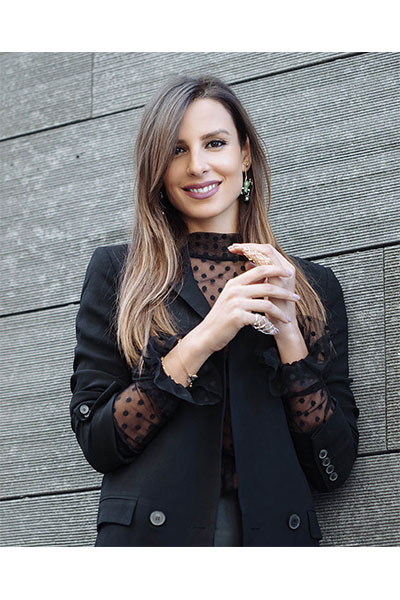
As a designer, you said you were inspired by everything that surrounds you, from your Lebanese origins to the philosophical thoughts from Michel de Montaigne to Hegel that influenced your work. Do you see yourself as an artist or a jeweler? Is your jewelry a way to depict life?
I think I am a combination of different things, sometimes contradictory things. I am a creative person as much as I am an analytical person. I love numbers as much as I appreciate art! What I love about jewelry, is the ability to create something physical out of abstract and conceptual things like feelings, that’s what drive my passion. I also enjoy translating the complexities of the human emotional range into a complex movement of the piece while at the same time keeping it wearable and elegant to fulfill its purpose. What also interests me is the challenge to create something that little and small as a piece of jewelry – as opposed to a dress for instance, and endow it with lots of meaning, details, and movements.
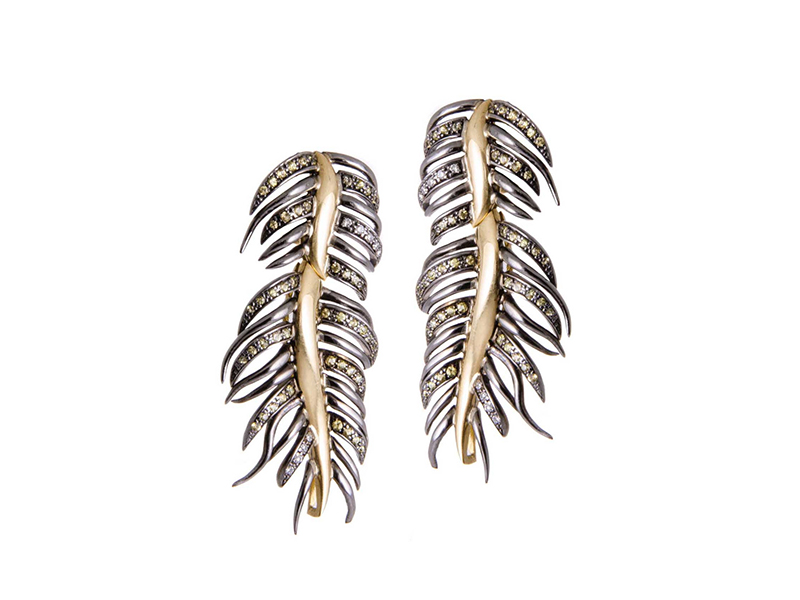
It’s hard to define your work that can be sometimes very modern, yet poetic, subtle and provocative. How do you want women to feel when wearing your jewels?
A woman should feel who she is when wearing jewelry, because it’s a way for her to express herself, silently yet loudly. I think a piece becomes alive the moment someone puts it on. The piece should always connect with the personality of the wearer. My jewelry line doesn’t actually seek any wearer, it’s the other way around: the ‘right’ wearer spots the piece that will make him feel more alive.
About your eponymous brand, you said that “your pieces were not mainstream and target a niche market of woman who are asking for something unique, different and sophisticated”. How do you explain these consumer expectations and how do you try to get in line with?
When I started designing, I was an economist and wasn’t necessarily fully aware of other designers in the market. I think this initial lack of knowledge gave my creativity enough freedom to direct itself in whatever path that felt right, undoubtedly working in my favor. Today, I try as much as possible to keep a visual distance from other people’s work in order to remain in my own creative ‘bubble’, so to speak.
As you said, commercial expectations are very important, so I try to always find a balance between remaining true to my own creative feel and creating pieces that would appeal to people. Today, we live in such an exciting time however, as social media is continuing to push boundaries and opening the world on itself. Exposure that used to take years to achieve is now accessible within seconds. It is a very dynamic time that I think should be handled with a lot of care: we should move fast enough to catch the flow, but cautiously enough to take the time to think, plan, and create.
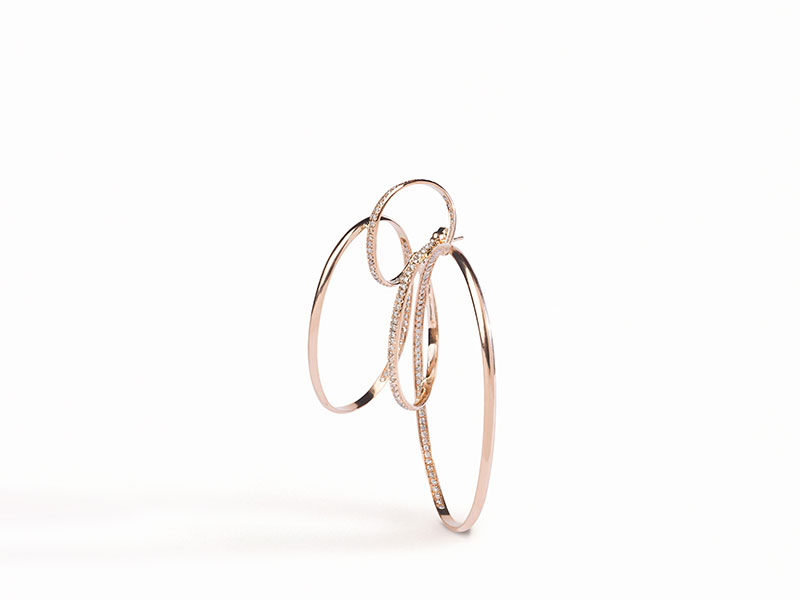
Do you think that sometimes focusing on the main source of inspiration of a piece can reduce its scope?
There are so many sources of inspiration to my work! Of course, my middle eastern heritage influences my work, but only partially because I lived abroad more than I lived at home. I believe my genuine interest in intricate craft and design stems from my Middle Eastern heritage which is renowned for its elaborate jewelry. In addition to this, much of my pieces follow movement with the fingers and hands which also relates to my Middle Eastern roots as women used to cover themselves and their hands with statement jewelry.
Also, the way I see creativity is something that stems more from the inside rather than external factors. Inspiration does not relate to what I see, but to what I experience with me emotionally. The pieces I create almost represent my inner voice – they are a tangible form of my emotions and thought process.
I find beauty in intricate and complex forms that are left unfinished and impure; I feel that such pieces with a contrasting fusion of appeal and unattractiveness create a particular and exotic beauty.
The Italian architect, Renzo Piano for example, has such complexities in his work – there are so many different perspectives in one piece when you look at it from a number of angles. Similarly, Jean Tinguely’s sculptures are very relatable to my own designs and what inspires me to create, as his work focuses on movement and technical challenges – something that triggers my own personal interests when designing. Visual influence aside, my reflective thinking is very much influenced by philosophical thoughts which consequently impact my creative process. I have always been greatly inspired by the writings of Michel de Montaigne, Hegel, and Nietzsche, each of them providing me with the strength to pursue my love for jewelry design and endowing me with the emotional depth that I work to translate in my designs.
Every collection you unveiled explores one particular aspect of the complexities of human beings. Could you share with us the topics that inspire you the most at the moment?
I’m fascinated by philosophy and the intangible realm of the mind and thoughts. Hence, the Inspiration for the latest collection, “The Next Perspective”, just like for previous collections stems from the inside. The story behind the collection is based on French Philosopher Jean-Jacques Rousseau ‘s thinking, “Man is born free and everywhere he is in chains”. The collection reflects on the idea that humans are prisoners of their own mind, incapable of attaining the true world: humans can never detach their mind when they look at things as they are always emotionally engaged and influenced.
Pieces are comprised of complex compositions of abstract ellipses, representative of the interpretations of the mind, which are in a constant state of motion.
Taking cues from the previous collection, ‘The Originators’, ‘The Next Perspective’ collection uses circles layered and intertwined, much like the synapses of the mind, to form wearable pieces. The circles are also the circle of thoughts that occupies a man’s inner world. Thoughts are depicted in the pieces in the form of lines, drawing on the notion that lines bend and twist. And when considered separately, a single thought, like a line, feels simple and straightforward. It is when a multitude of thoughts come together to interact that simplicity is removed and the thinking and emotion become a complex system.
